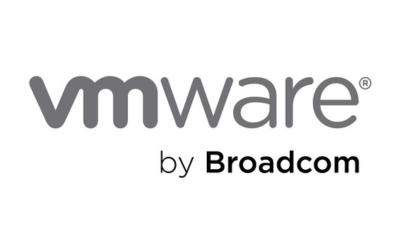In a time where digital disruption seems to be constant, the need for business to embrace all things digital is accelerating. Companies understand that data, technology, and analytics are key to their future success, but they don’t know how. Business leaders can talk about all the digital transformation initiatives they have going on, such as building a new tech app or investing in more modern infrastructure. However, ask for more details on how these projects affect the bottom line, and they’re at a loss for words.
The goal of digital transformation is to optimise processes and replace manual work with automated, technology-based tools. Yet many business leaders only measure high-level metrics such as overall timelines and project costs when determining success. The true measure of digital transformation success is in the details of how the project impacts the company. Plus, if it’s not affecting the bottom line at various levels, what’s the point?
Monitoring and driving the detailed metrics falls to business and functional leaders, such as the C-suite and team employees directly affected by the changes. Digital transformation is often a horizontal change, spanning different teams and processes across the company. Measuring the progress of digital transformation requires tracking cross-organisational metrics at various levels.
The Importance of Measuring Digital Transformation Progress
As a quick reminder, digital transformation (DX) is “a process where digital technology is introduced into every part of a business and revolutionises how you interact with and deliver value to customers.” It’s more than just swapping out old technology for new or automating a manual process. It’s about changing a company’s mindset and redefining how it delivers customer value.
Business leaders and operations teams have different perspectives when it comes to digital transformation. Leaders need to demonstrate a compelling ROI on the initiatives to secure support and ongoing funding for additional projects. They want to be seen as “doing” digital transformation and often point to competitors who are doing it “right now.” On the other hand, erations teams tend to be focused on implementing the initiative and hitting milestones. They’re less likely to be concerned with how it affects business objectives or how they compare to competitors.
This is why many companies try to measure the success of their digital transformation initiatives. They’ll track financial and operational efficiency rates as a sign that the initiative succeeded or failed. In reality, however, these metrics aren’t always effective in measuring the true success of a DX program. McKinsey’s Digital Quotient report found that less than 15% of companies using financial KPIs can accurately quantify the ROI of digital transformation investments.
The Foundation to Measure DX Progress
Initiatives that have such wide-reaching impacts as a digital transformation program requires careful planning. Business leaders may insist on standing up the project quickly. However, it’ll only succeed in the long-term if you slow down and think methodically about it. You’ll be able to align it more appropriately to your overall business goals and calculate a realistic ROI.
Here is a general five-step checklist your company can use to set up a solid foundation to measure DX progress.
- Identify a specific business problem or opportunity that the DX program can help. E.g., Improving customer service processes or increasing adoption rates of data analytics tools.
- Align the problem or opportunity to business goals. This ensures that stakeholders understand how the changes will impact the business and communicate it to the affected employees.
- Determine the investment or cost of the initiative. Be as detailed as possible, and include any technologies and services such as network infrastructure, applications, monitoring solutions, security, project staffing, customer service, marketing, and consulting.
- Determine the value metrics that will demonstrate the return on the investment.
- Set a timeframe for the project that uses baseline figures as a starting point. You can use them as a basis for comparison once the project is complete.
This foundation is only part of the process to measure the progress of your digital transformation project. Tracking specific metrics will help you monitor and measure progress for the project, so you know where it stands. Even just thinking about the metrics you want to measure puts you ahead of other companies undertaking digital transformation since Gartner found that almost half of them have no metric to measure it.
Here are nine metrics you can track to measure your digital transformation progress and evaluate its effectiveness for your company.
9 Metrics to Measure Your Digital Transformation Progress
Here are metrics that can provide more meaningful insight into your digital transformation initiatives.
1. Scope of Transformation
Look at the scope of what you’re aiming to achieve through digital transformation and put some numbers to it. Are you expecting it to affect the entire company or just certain teams? Will it involve deploying a single tech tool, or will it require coordination of a few, plus revised process workflows?
Metrics to consider tracking the scope include:
- Revenue from digital services
- Time saved during processes
- The volume or value of outputs relative to the resources investment (operational improvement)
- Revenue per employee
- Manual vs automated hours invested per manufactured item
2. Return on Digital Investment
By 2024, investments in digital transformation are expected to reach $7.8 trillion. Successful initiatives can increase overall business revenues and employee productivity, so measuring its impact on various company areas is useful.
Metrics to consider measuring to determine the ROI of the project include:
- Percentage of the investment that directly influences revenue
- Conversion rates before and after the transformation
- Churn rates before and after the transformation
- Customer lifetime value
- Employee attrition rates before and after the transformation
- Employee churn
- Months to recover investment
- For SaaS companies, changes in monthly recurring revenue (MRR) and annual recurring revenue (ARR) rates
3. Active Usage
Successful digital transformation requires scalable adoption of the technology. Enough employees must integrate that technology into their jobs or daily work lives as a necessary replacement for an outdated or time-consuming alternative.
Metrics that’ll help identify active usage among employees include:
- Daily or weekly active users
- Ratio of new to repeat users
- Productivity output rate
4. User Engagement
The new technology should be sufficiently impactful to employees’ and users’ daily work lives to encourage regular engagement. If they’re not using it in the way you anticipated, it’s probably because the technology wasn’t useful enough for them to switch from their current work pattern. Additionally, tracking insights on popular features and functions of the technology can help your company better understand usage patterns and make appropriate changes.
Metrics that can help identify user engagement rates include:
- Net promoter score (NPS) or employee satisfaction score
- Traffic sources
- Bounce and exit rates
- Heat maps for online tools and web-based portals
5. Availability and Reliability
One of the main reasons for digital transformation is to replace legacy technologies or manual processes. But sometimes, you just can’t get rid of the legacy tech right away, so you integrate it with the new tech, which causes additional problems you hadn’t anticipated. So, you must evaluate the system performance and monitor possible reliability issues during and immediately after the transition.
Metrics you can track to measure availability and reliability include:
- Tech/IT uptime
- Mean time to failure (MTTF)
- Mean time to resolve (MTTR)
- Mean time before failure (MTBF)
6. Risk Factors
The long-term viability of your transformation initiative requires investment in reducing the risk associated with the technologies and anything it integrates with. As more assets and processes go digital, companies must evaluate the new technology’s cybersecurity and data privacy risks.
Metrics you can track to measure the risk factors include:
- Mean time to failure and resolve (MTTF and MTTR)
- MTBF
- Access frequency at various privilege levels
- Data transfer volumes
- Bandwidth usage
- Number of connected systems with known vulnerabilities
- Age of connected systems
7. Deployment Speed
The speed of a digital transformation project is critical today. In a fast-changing and digital world, any delay means ceding ground to the competition or producing a tool that’s obsolete before it’s even used. Deployment speed reflects on the company undergoing the change, showing how well the individual stakeholders work together and use modern tools, data, and processes to learn and improve.
Metrics you can use to measure deployment speed include:
- Time to market
- Time to reach milestones
- Number of hours required to implement, test, and deploy
- Number of teams or business units involved
8. Employee Churn and Other Metrics
One metric that’s often ignored during digital transformation projects is around tech talent and staffing. HR teams measure and own most staffing metrics, so they’re not integrated into transformation projects beyond a simple headcount number. Yet tech employees are a vital element of any transformation project, so it’s essential your company can attract, promote, and retain talent if you want the project to be successful.
Metrics you can use to measure talent levels for a transformation project include:
- Overall tech staff numbers
- Breakdown of tech staff by seniority, skill set, and years with the company
- Forecast of future tech staff needs as the project progresses or scales
- Employee satisfaction rates
- Employee training rates (how many employees sign up for on-going training, what type of training they’re taking, etc.)
9. Customer Experience
For transformation projects that will directly affect your customers, such as improving customer support or conversion, you’ll need to determine how well your tech investments translate into the desired financial improvements. Not everything will directly impact your bottom line, but it can improve secondary areas that will.
Metrics you can track to measure the impact on your customer experience include:
- Customer satisfaction
- Customer effort score
- Customer loyalty index
- Sentiment analytics
- Net promoter score
Ensuring Digital Transformation Progress and Success
Sustaining digital transformation is challenging for today’s companies, and it’s why some take years to do it. The drive to accelerate the shift to digital business initiatives has meant big changes. Still, as the digital world evolves, business leaders will find it critical to keep up the momentum. And if they can scale their efforts to roll out digital transformation initiatives across the company regularly, even better.
Developing detailed metrics that can measure digital transformation progress is one of the ways to do it. Companies will be able to track the effects the changes are having at granular levels and will be able to pivot more easily to sustain the changes. They’ll identify gaps and opportunities for future improvement while measuring the progress of change today.
Quantifying these efforts will become more critical in the future as newer technologies become available and legacy ones reach end-of-life status. If you decide on the right set of metrics with each project, your digital transformation will be more efficient and drive more value to your company and customers.
If you are looking to start your digital transformation journey or want to measure your success, our team can help you to develop your strategy and realise the return on your investments. Get in touch today.


